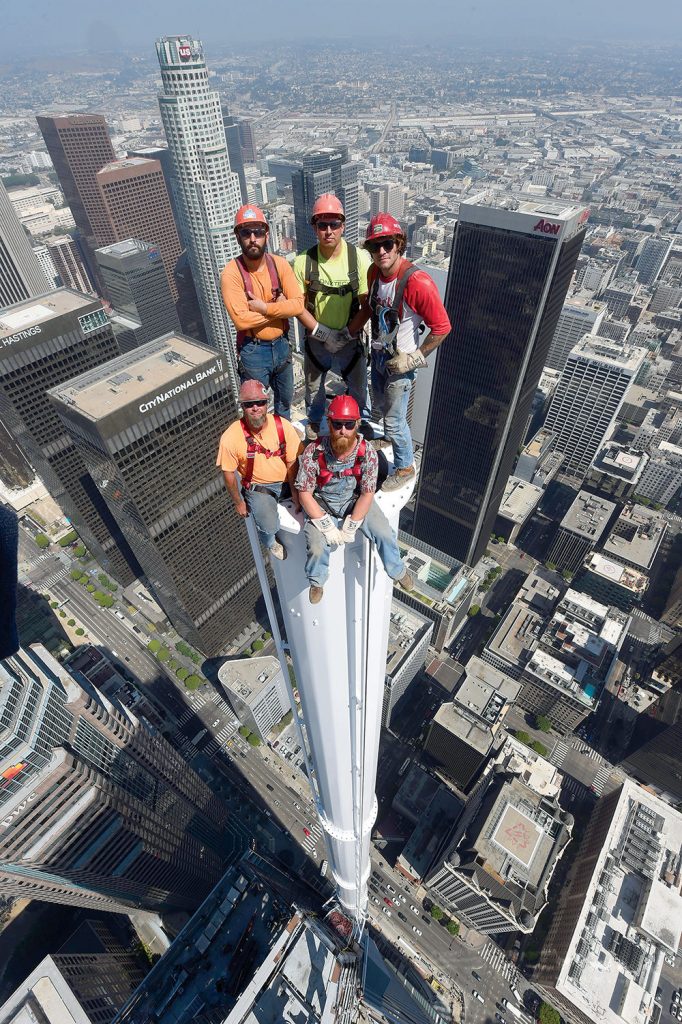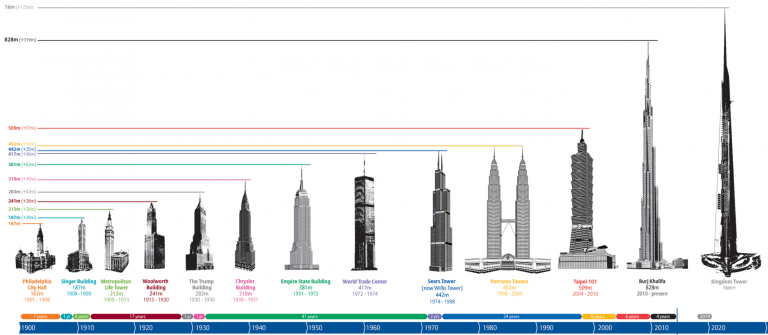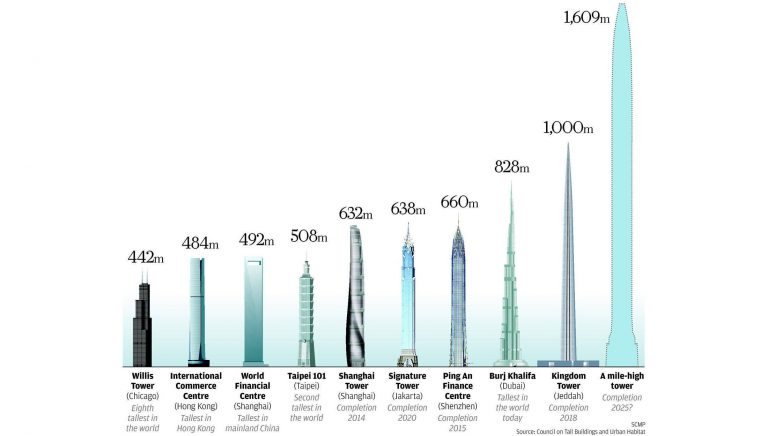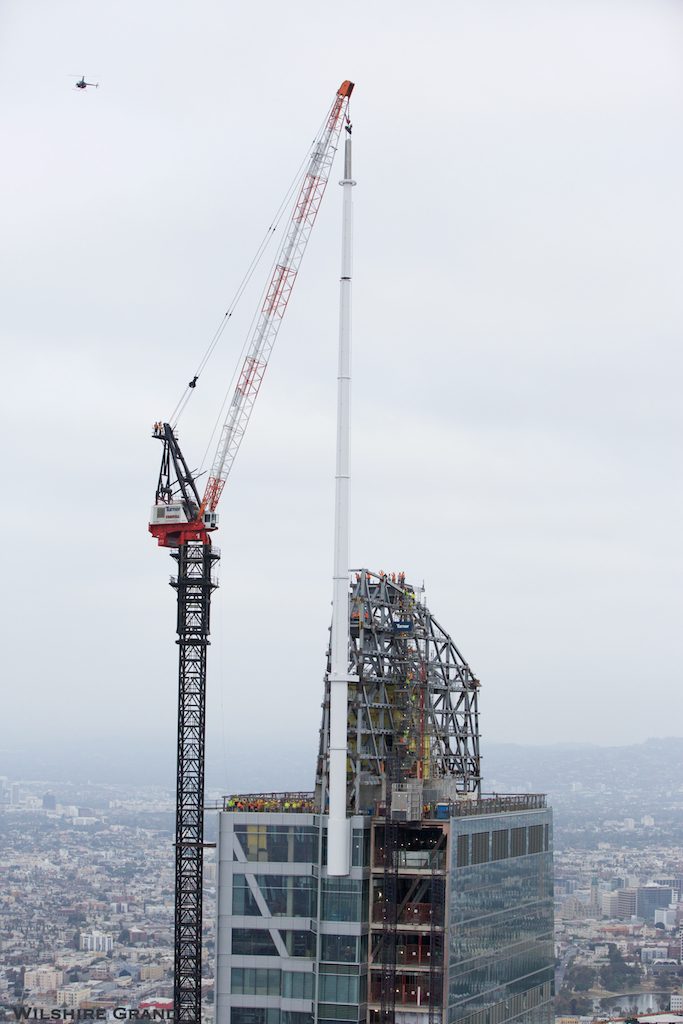Views From the Top of the Skyscraper Index On a warm Friday Los Angeles morning in spring of 2016, we found ourselves standing at the busy corner of Wilshire Boulevard and South Figueroa Street. We were walking back to our office following a client wire brushing for events beyond our control. But we had other thoughts on our mind. Standing amid a mob of pedestrians, we gazed up at the skeleton frame of what would become the Wilshire Grand Center. For the first time in several years the buzz and hum of diligent building activity was replaced by an eery silence. In fact, construction work was shut down for the day. Sadly, less than 24 hours earlier a distraught electrician had taken a swan dive off the 53rd
Topics:
MN Gordon considers the following as important: Andrew Lawrence, Burj Khalifa, Debt and the Fallacies of Paper Money, Featured, Hanjin Group, Jeddah Tower, newslettersent, On Economy, Wilshire Grand Center, Yang Ho Cho
This could be interesting, too:
Robert P. Murphy writes Simon Guenzl vs. Dave Smith on Open Borders
Sean Twomey writes Why Politicians and Bureaucrats Choose Politics over Sound Economics
David Gordon writes The Non-Austrian Theory of the Nonbusiness Cycle
Marc Chandler writes Where We Stand
Views From the Top of the Skyscraper IndexOn a warm Friday Los Angeles morning in spring of 2016, we found ourselves standing at the busy corner of Wilshire Boulevard and South Figueroa Street. We were walking back to our office following a client wire brushing for events beyond our control. But we had other thoughts on our mind. Standing amid a mob of pedestrians, we gazed up at the skeleton frame of what would become the Wilshire Grand Center. For the first time in several years the buzz and hum of diligent building activity was replaced by an eery silence. In fact, construction work was shut down for the day. Sadly, less than 24 hours earlier a distraught electrician had taken a swan dive off the 53rd floor. The man’s death prompted an immediate work stoppage and evacuation of the tower. “It sounded like a bag of cement fell off the edge of the building,” one observer remarked. Naturally, the sound of impact was far too grim for us to contemplate. Instead, we wondered how time must have simultaneously slowed down and sped up for the jumper as he descended toward the ground. Did he want a redo before it was game over? We have a hunch that over the next couple of years, vast numbers of people are going to experience the rush that comes when time simultaneously slows down and speeds up. Not because they have performed a base jump off a skyscraper – though some will. Rather, it will occur at the precise moment they come to the rude realization that they’re broker than broke. We will have more on this in just a moment. But first some context is in order… |
 Iron workers (the non-distraught variety) atop the 10 ton spire of the Wilshire Grand Center in Lost Angeles. This image is vaguely disconcerting… we can’t help thinking that an unexpected gust of wind could have proven quite disruptive to this show of nonchalant equanimity. Photo credit: Gary Leonard - Click to enlarge |
A Grand Ego StrokeSeveral weeks ago the Wilshire Grand Center officially opened. The building is claimed to be the new tallest building in Los Angeles, and the tallest building west of the Mississippi. But we have some reservations. Because the top of the Wilshire Grand Center is actually about 18 feet shorter than the U.S. Bank Tower that’s several blocks away. However, there’s a bizarre looking 100-foot spire at the building’s peak. Apparently, this spire has a very definite purpose. Per the Council of Tall Buildings and Urban Habitat – if you can believe there is such a thing – a spire is considered an architectural feature and is, thus, counted when measuring the building’s 1,100 foot height. Tall buildings arbiters’ aside, we ain’t buying it. But our opinion on the matter doesn’t matter. Korean Air / Hanjin Group financed construction of the Wilshire Grand Center. The claim that this is the new tallest building west of the Mississippi, regardless of spire gimmickry, offers Korean Air Chairman Yang Ho Cho a grand ego stroke. We recommend that he enjoys it now before he rues it. You see, the construction of marque skyscrapers has an uncanny track record of coinciding with the late stages of an artificial, cheap credit induced building boom. If this holds true, the Wilshire Grand Center will forever be a monument to ZIRP, NIRP, and QE. What’s more, there are several other new skyscrapers monuments that will be opening their doors real soon. This can only mean one thing… |
|
Views from a Top of the Skyscraper IndexThe skyscraper index was first elaborated by Andrew Lawrence in January 1999. The idea is simple enough. The world’s tallest buildings are often completed on or around the onset of economic downturns. What the skyscraper index does is it accounts for the long lead time that massive ego stroke projects like the construction of the tallest building in the world take to come to fruition. By the time these mega edifices are complete, the free flowing credit that bubbled up their construction, and other bubbles throughout the economy, has nearly exhausted itself. This is about the time the boom turns to bust and the economy slips into recession. For example, the Burj Khalifa in Dubai, which is the tallest building in the world at 2,126 feet, was completed in 2008. If you recall, this was shortly after the onset of the Great Recession. The cheap credit that pumped up the Burj Khalifa was the same cheap credit that pumped up the U.S. residential real estate bubble. At the moment, several other tallest building records that dwarf the Wilshire Grand Center are nearing completion. The first being the Central Park Tower in New York, which upon opening its doors in 2019 will be the new tallest building in the United States at 1,550 feet. The second being the Jeddah Tower in Saudi Arabia, which will be completed in 2020 and will be the new tallest building in the world at an insane height of 3,281 feet. |
Competition to Construct ever Higher Buildings Nearer my Lord, to thee… the competition to construct ever higher buildings over the past 120 years. See also “Soaring to Bankruptcy in Jeddah” for an earlier comment on the Jeddah Tower. This particular construction decision turned out to be a major warning signal for the oil boom – click to enlarge. - Click to enlarge |
| Based on the open date of the Central Park Tower and the Jeddah Tower, the Wilshire Grand Center may be an early indicator of the approaching panic. The timing is hard to precisely pin down.
But what is clear is where the credit has come from to pump up these grand ego strokes. It has come from precisely the same place where the credit that has boosted world stock indexes to record heights has come from. Mass central bank balance sheet expansion and zero to negative interest rates. These asset price inflation puffers are always fleeting. Views from a top of the skyscraper index show a coming day when time simultaneously slows down and speeds up in a great manic panic. This is the day the debt edifice crumbles. Why wait to get your financial house in order? |
Current Crop of the World’s Tallest Buildings The current crop of the world’s tallest buildings. There are already plans to surpass the insanity in Jeddah – “The Bride”, which is supposed to be erected in Basra in Iraq, would be 152 meters taller (roughly 499 feet). - Click to enlarge A number of architects are already talking about a “mile high tower” that may get built by 2025, simply because it is theoretically doable. We discussed the “Bride” and a few other buildings relevant to the Skyscraper Index last year in “Skyscraper Mania Goes Global”. What is especially interesting is that the number of “super-tall buildings” either finished or under construction worldwide has doubled since 2010. In terms of the Skyscraper Index this indicates that we are living in the final stretch of the greatest credit bubble in all of history, which appears indeed to be the case. The supply of money and credit (particularly in the world’s largest currency areas) has grown at breathtaking rates since 2008 and the same has happened to the number and height of super-tall structures |
Tags: Andrew Lawrence,Burj Khalifa,Featured,Hanjin Group,Jeddah Tower,newslettersent,On Economy,Wilshire Grand Center,Yang Ho Cho

